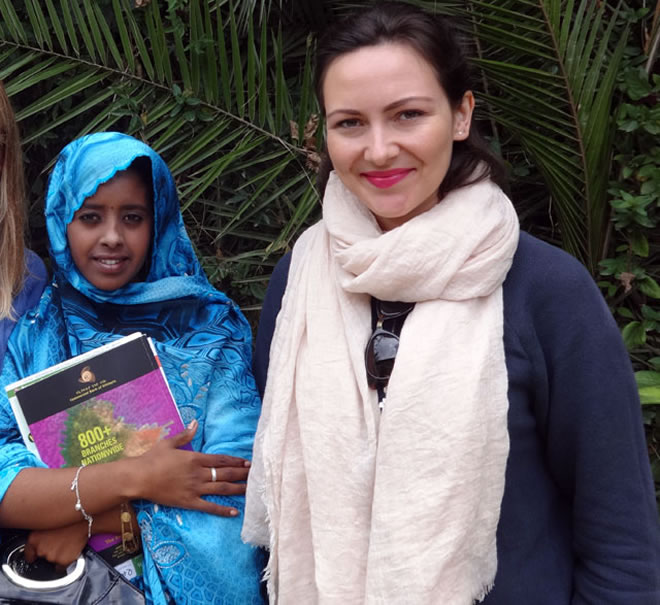The practice of FGM is painful, harmful and incredibly dangerous in any form, but the most severe and debilitating type – infibulation – is so shocking, it's difficult to even read about.
Practised largely in the Somali region of Ethiopia, the traditional process for infibulation involves the girl having her clitoris cut out and other parts of her genitalia carved away. The bleeding sides of the girl's labia are then sewn up with silk or held together with horizontally-inserted thorns. Then, after a paste of herbs has been applied on the wound, the thighs of the girl are tied up and she is left lying on a mat for several weeks. If she survives, and the wound has healed, the entrance to the vagina is closed except for a tiny opening created by inserting a splinter of wood. On her wedding night (which for many of these girls will happen before she is even 10 years old), the groom will have to open his bride (de-infibulation). This is often done with a dagger or sharp instrument.

"I was circumcised at 10 years old. It was a shock – I had no idea it was going to happen to me. I was playing with my friends, when the adults asked one friend to leave. She went first. All four of us went through it on the same day. I was given a 'Sunna' circumcision, which meant skin was cut from around my clitoris, and the tip of my clitoris was removed. It's widely practised in the Somali region of Ethiopia (where I come from) and was done in a medical centre.
“The circumcisers usually use anaesthetic, but they didn't use any on me. It took three days to heal and I felt a lot of pain. My friends however, were given infibulation, which is the most severe form of FGM – which means the girl's vagina is cut and sewn up, to leave a tiny gap. They said it was agonising. With this method, the pain lasts throughout a girl's life – when they have a period, when they have sex and when they give birth. When a girl has experienced infibulation, the stitches are opened up just before the marriage – sometimes by the husband. My friend was taken to hospital just before she was married to unstitch her there. It's incredibly painful.
“Because of my experience, I want to study and become a doctor. I'm in school now and run a club there – and on weekends too. Girls from different schools and areas join – sometimes up to 350 girls attend each weekend club. During the sessions, I tell them about my experiences and why we should try and stop harmful practices like FGM once and for all.
“When I asked my mother why she allowed this to happen to me, she said she did it so I could find a husband. But now, I don't want to focus on husbands or men – my education is what matters to me. I want to teach other young girls the same thing too."
Across the world, 8000 women and girls are at risk of mutilation every single day. In England and Wales, an estimated 66,000 women are living with the consequences of FGM and more than 20,000 girls are at risk every year.
As part of the summit, the Government is asking people to pledge their support through social media with the hashtag #GirlSummit and they have created the world’s first “Instagram documentary” in honour of girls affected by child, early and forced marriage and FGM.
Pledge your support at www.girlsummitpledge.com
No comments:
Post a Comment